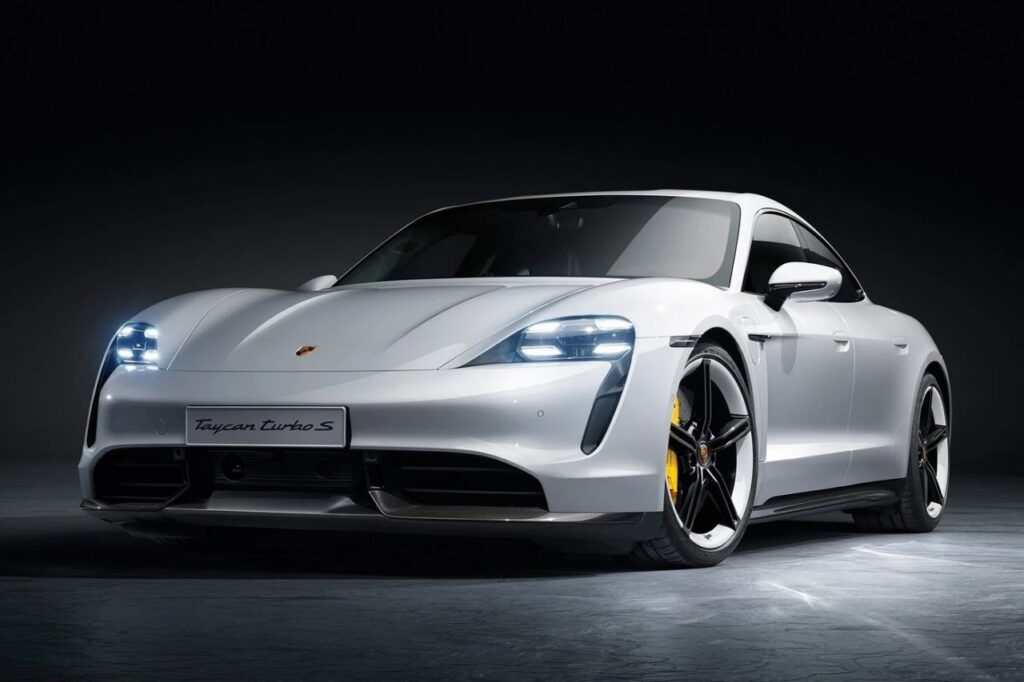In 2023, the BYD Qin PLUS DM-i Champion Edition priced at 99,800 yuan did not defeat the Nissan Sylphy, which remained the most popular sedan of the year.

However, it is an indisputable fact that Japanese sedans, which pride themselves on fuel efficiency, have suffered a blow: The annual sales of Sylphy have dropped from a peak of 538,600 units (in 2020) to 376,100 units. The last time this car’s annual sales fell below 400,000 units was back in 2016. Toyota Corolla and Levin even failed to make it into the top 10 of the sedan sales chart.

Last Sunday (February 25th), Yangwang launched its second model, the Yangwang U9, priced at 1.68 million yuan, which falls exactly within the price range of Porsche 911. Many netizens commented: “Porsche, it’s your turn now!”

Of course, there are also some netizens who have questioned the sportiness of this car, arguing that it cannot be considered a true supercar.
- The most expensive BYD in history, but without luxury car tax.
The Yangwang U9 comes with only one configuration, priced at 1.68 million yuan, and only one optional package, the “Carbon Fiber Swan-neck Large Tail Wing” (priced at 100,000 yuan).

The price of 1.68 million yuan is currently the ceiling for independent manufacturers, and only Yangwang U9 and Hyper SSR Ultimate Track Edition (priced at 1.686 million yuan) have reached this level. (We are not discussing Hongqi L5 and some special vehicles here.)
- A four-motor supercar with over 1,300 horsepower.
What can you get for over one million yuan?
The Yangwang U9 is based on the Yi Sifang technology platform and equipped with four motors, achieving a total power of 1,306 horsepower and a peak torque of 1,680 Nm.

Correspondingly, the Lamborghini Revuelto is equipped with a hybrid system combining a V12 engine and three motors, achieving a total power of 1,016 horsepower and a peak torque of 807 Nm.

In terms of acceleration from 0 to 100 km/h, the Yangwang U9 achieves a time of 2.36 seconds with a measured top speed of 309.19 km/h, while the Lamborghini Revuelto has an official 0-100 km/h time of 2.5 seconds.

The Yangwang U9 also features the Yunni X intelligent all-active body control system, which enables functions such as three-wheel driving, four-wheel dancing, and spot turning.
Regarding the body, the Yangwang U9 employs a monocoque carbon fiber cockpit and integrates the battery pack with the carbon fiber cabin, achieving a remarkable torsional stiffness of 54,425N·m/deg for the entire vehicle.

- Does it qualify as a supercar?
BYD officially defines the Yangwang U9 as a “pure electric supercar suitable for racing, street driving, and fun,” but there are also some netizens who believe that the Yangwang U9 cannot be considered a supercar.
The only doubt about the Yangwang U9’s identity as a supercar comes from netizens who believe it is “not fast enough.”
The official lap time of the BYD U9 at the Shanghai International Circuit is 2 minutes and 17.65 seconds. This result is not slow, but it’s also not particularly fast.

There are not many official lap times certified by the Shanghai International Circuit for production cars, and most of them are for four-door sedans and SUVs. For example, the Porsche Panamera Turbo (4.0T 550 hp) achieved a time of 2 minutes and 27 seconds (2017), while the BMW M4 (4.4T 560 hp) achieved a time of 2 minutes and 22.828 seconds (2017).

The fastest production car officially certified at the Shanghai International Circuit is the NIO EP9, with a lap time of 2 minutes and 1.11 seconds. However, the NIO EP9 cannot be driven on public roads, so technically it is not a production car in the strict sense.

In terms of unofficial lap times, the Porsche 911 Turbo S achieved a time of 2 minutes and 11 seconds, while the Audi R8 V10 PLUS and the Mercedes-AMG GT R both achieved a time of 2 minutes and 10 seconds.

Certainly, most people are more curious about why it’s not faster. There are two main reasons:
First, the vehicle is heavy: The Yangwang U9 weighs 2,475 kilograms, which is only 50 kilograms lighter than the Geely ZEEKR 001 FR, a two-door, two-seat hardtop sports car. It’s also 485 kilograms heavier than the Hyper SSR Ultimate Track Edition, which is also positioned as a pure electric supercar.

The second reason is that the motor power is not high enough, especially the power of the rear motors: The four motors of the Yangwang U9 each have a power of 240kW, while the two rear motors of the Hyper SSR Ultimate Track Edition have a power of 320kW. Even the rear motor power of the Porsche Taycan Turbo S, which was released five years ago, has reached 335kW.
Certainly, we maintain a positive outlook on this vehicle. The development of things must follow objective laws, and BYD cannot be expected to create a flawless supercar on its first attempt.
It took BYD 13 years from the F3 DM in 2008 to the Qin PLUS DM-i in 2021. If you truly want to see domestic brands’ supercars break track lap records, please give them some time.




